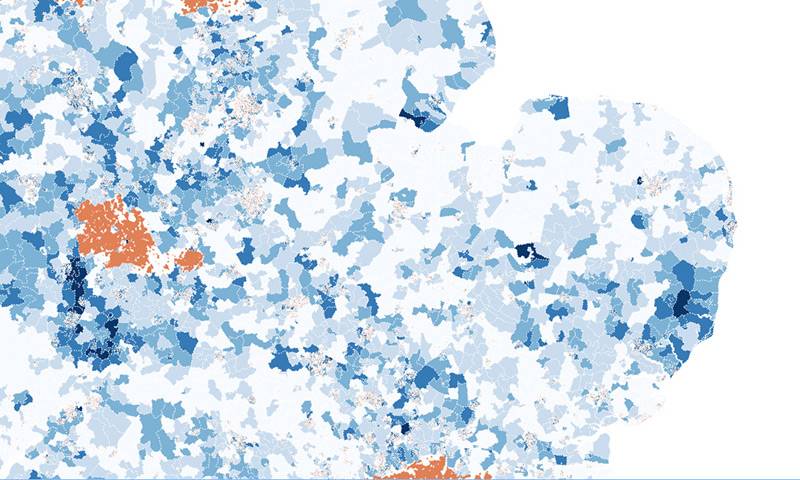
Overview
The Urban Dynamics Lab at UCL is a five-year EPSRC-funded research project bringing together expertise from across UCL (Space Syntax, Centre for Advanced Spatial Analysis, Geography / Consumer Data Research Centre, and Computer Science), to explore and address questions at the intersection of city and regional development and spatial analytics, data science and computing.
The project is part of the Digital Economy Network and firmly based on a commitment to applied research and exploring avenues for policy impact within the UK regions in co-design with Local and Central Government, as well as corporate and third sector project partners.
Its remit is timely against the backdrop of a renewed interest in evidence-based policy-making and a local and devolved approach to urban and regional development, and in addressing the historic spatial divides and interdependent conditions affecting city and regional agglomeration dynamics and related questions, ranging from inequalities and segregation, to economic and labour market configurations, to questions of connectivity and spatial morphologies from the global to the local level.
The Urban Dynamics Lab brings together a long-standing history of practice and research across three spatial analysis schools and their methodologies in exploring and tackling these challenges, and focuses on the research strands below.
EPSRC Grant Reference: EP/M023583/1
More information
- Visit the Urban Dyrnamics Lab website
- For more information about the project, please contact Centre and Policy Manager Carina Schneider: c.schneider@ucl.ac.uk
- Read about the related project Designing a National Data Facility for UK RDRF
Research
Research for the project will explore issues pertinent to urban and regional development, building on the expertise and long history of this discipline within UCL, and focus on:
- Mapping the UK infrastructure ‘fitness landscape’
Building a unified analytic map of the network of UK infrastructure of all types, loaded with locational information on property stock. This will create a new generation of integrated regional modelling capability. - Remapping the UK’s functional regions
Currently regions used for economic statistics are defined by administrative boundaries. Functional regions based on analysis of travel to work patterns have been shown to give a much better account of UK economic geography. New city definitions show how stocks and flows of materials, people, information and energy over infrastructure networks can be used to remap functional regions of any town or city. - Mapping inequalities
In order to pinpoint the negative consequences of agglomeration we will map inequalities of various kinds, and investigate the association between these and flows of capital, credit, investment, employment and social and physical infrastructure. - Identifying areas for development investment
Where is infrastructure investment best targeted to stimulate private sector investment and third sector action? We will create a new diagnostic tool based on analysis of residuals between different kinds of infrastructure capacity and configuration, and economic activity. - Developing new models of economic diversity at city and regional levels
Testing Hidalgo, Hausmann and Pietronero’s theories on UK cities and regions and in this way automate the UK fitness landscape, which is composed of functional regions.
Project partners
- Core Cities
- Future Cities Catapult
- Centre for Cities
- Bank of England
- Greater London Authority
- BUPA
- FSP Retail Consultants
- Ordnance Survey
- Space Syntax Limited
- Intel
- SAS
- Local Data Company
People
Centre and Policy Manager:
- Carina Schneider: c.schneider@ucl.ac.uk
Space Syntax Laboratory
Principal Investigator:
Researchers:
CASA
Co-Investigators:
Researchers:
Geography
Geography Co-Investigator:
Researchers:
Computer Science
Co-Investigator:
Researchers:
policy Close
Close

